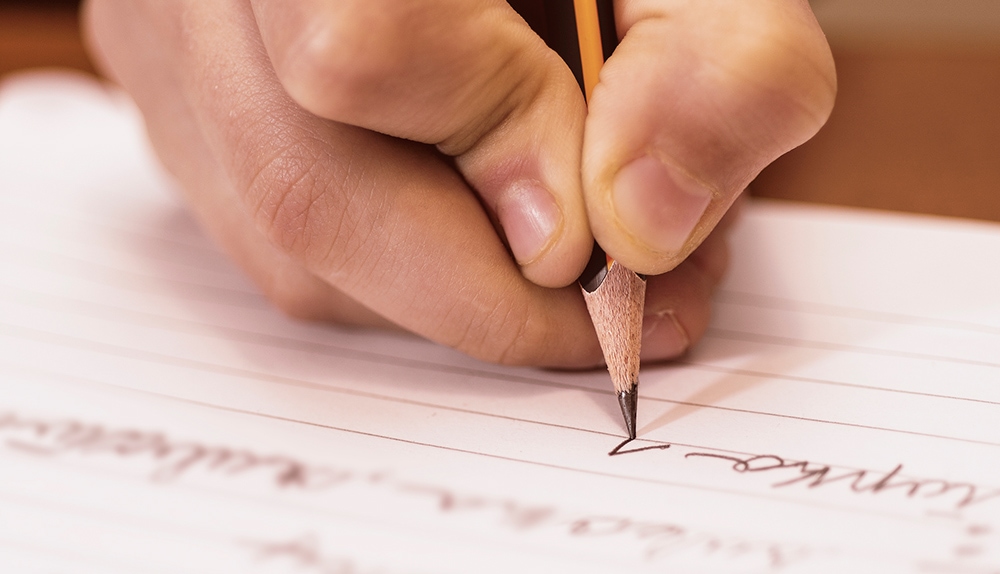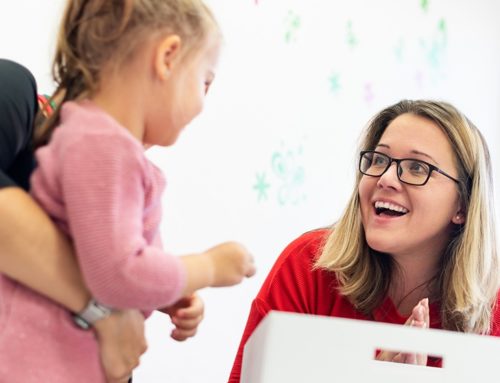Multi-Sensory Approach to Teaching Handwriting
When we hear the word “sensory” we often think of our own senses and how our bodies are feeling in that moment. What if I told you that we could use sensory strategies in order to help teach children printing and handwriting skills? Would you believe it?
One of the main reasons children are referred to Occupational Therapy services is for poor printing or handwriting skills (Hoy, Egan & Feder, 2011). As a parent, you may notice that your child is experiencing challenges with legibility of writing (letter formation, orientation to baseline, sizing of letters, spacing), or they don’t seem interested in gaining new skills in this area. Handwriting is an important skill that should not be forgotten since many daily living tasks that children complete require it including writing an assignment or test both at home and at school (Woodward & Swinth, 2002). Also, having clear and legible handwriting can actually help to increase your child’s confidence levels, attention to tasks and to inspire creative thoughts (Viholainen, Aro, Purtsi, Tolvanen, Cantell, 2014).
Multi-sensory approaches for teaching handwriting skills use a variety of different techniques and activities that help teach children their letters by allowing them to explore and experience through their senses including touch (using different materials), sound (hearing songs of verbal cues), movement, and sight (building letters, imitation, etc.) (Woodward & Swinth, 2002). Close your eyes for a minute and really focus in on all seven senses and think about all the ways you can use those senses in order to make teaching letters more fun and exciting. When children are struggling with handwriting, they may complain that they find the practice boring. Using a multi-sensory approach to handwriting, there are several ways to make it more enjoyable.
Here are four different multi-sensory approaches for teaching letters, along with activity suggestions to try at home with your children:
Verbal Activities:
- Give verbal instructions as you model the letter formation patterns. For example, the letter ‘L’ is a “big line down and a little line across the bottom” (try to keep the language consistent)
- Ask your child to repeat the instructions to you
Visual Activities:
- Try modeling the letter formation pattern for your child
- Use different writing tools to keep it interesting (e.g. crayons, markers, paint, etc.)
Tactile Activities (Touch):
- Practice writing letters in different textures such as sand, shaving cream, rice or paint
- Use a plastic page protector instead of paper and wipe-off crayons, wax pencils, or dry-erase markers to draw
- Try forming letters out of different materials such as play-doh, pipe cleaners, yarn and sticks
- Draw the letter on the child’s back or arm and have them guess the letter
Motor Activities:
- Have your child write the letter in the air using their forearm, elbow or another body part
- Dip a sponge or paintbrush in water and practice forming the letters on a blackboard
- Have your child form the letter on a piece of paper mounted to a vertical surface (e.g. taped to the fridge or on a wall), or flat on the ground with your child on their belly
- Turn off the lights and use a flashlight to draw different letters either on the ceiling or walls
Research into handwriting instruction is still evolving. That being said, multi-sensory handwriting practice can be a useful tool to use when trying to make learning letters a little bit more engaging for your child! Remember it’s important to practice handwriting in short but frequent sessions and to incorporate a combination of pencil and paper tasks mixed with multi-sensory activities in order to achieve maximum results (Hoy, Egan & Feder, 2011).
Do you have any questions about Occupational Therapy? Contact us today!
References
Hoy, M.P., Egan, M.Y., & Feder, K.P. (2011). A Systematic Review of Intervention to Improve
Handwriting. Canadian Journal of Occupational Therapy, 78(1), 13-25.
Viholaine, H., Aro, T., Purtsi, J., Tolvanen, A., Cantell, M. (2014). Adolescents’ School Related
Self-concept Mediates Motor Skills and Psychosocial Well-being. British Journal of Educational Psychology, 84, 268-280.
Woodward, S., & Swinth, Y. (2002). Multisensory Approach to Handwriting Remediation:
Perceptions of School-Based Occupational Therapists. The American Journal of Occupational Therapy, 56(3), 305-312.






